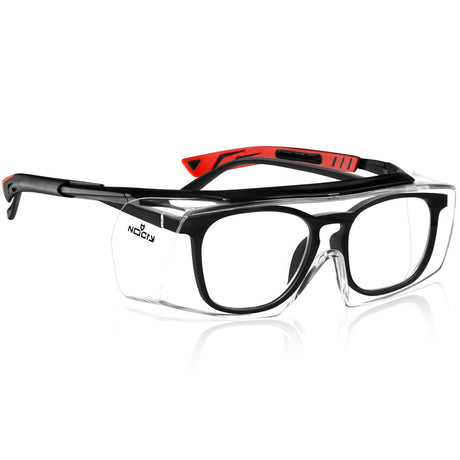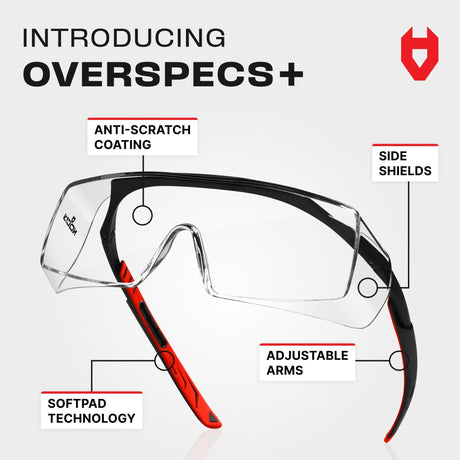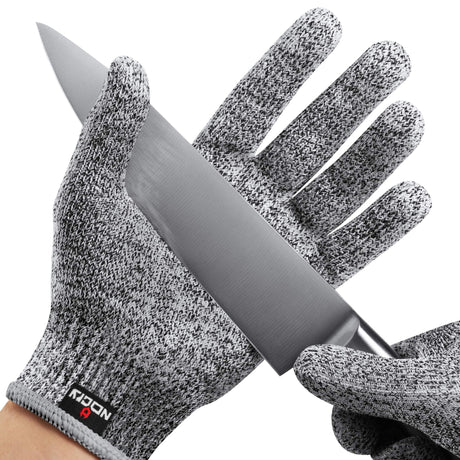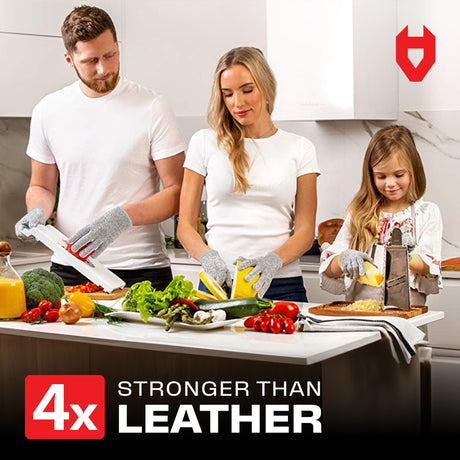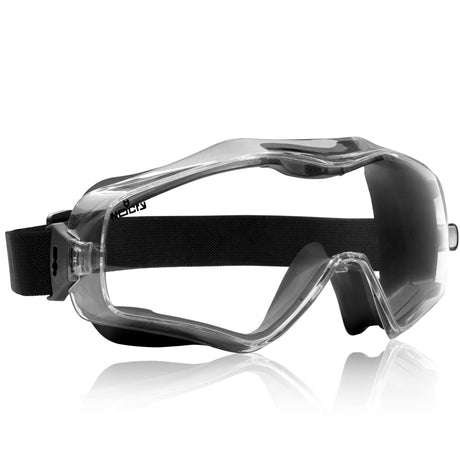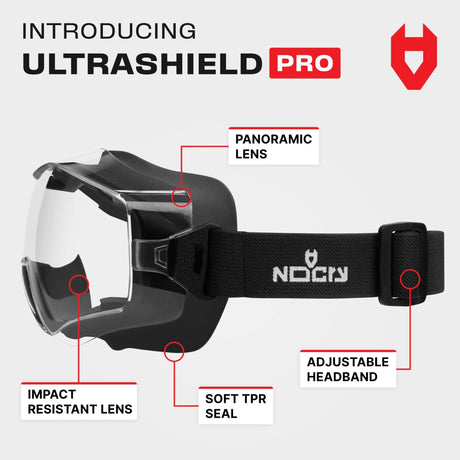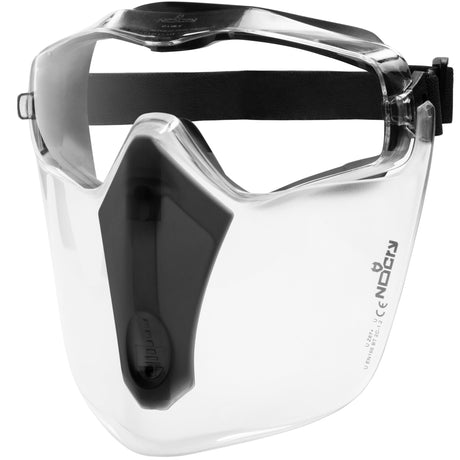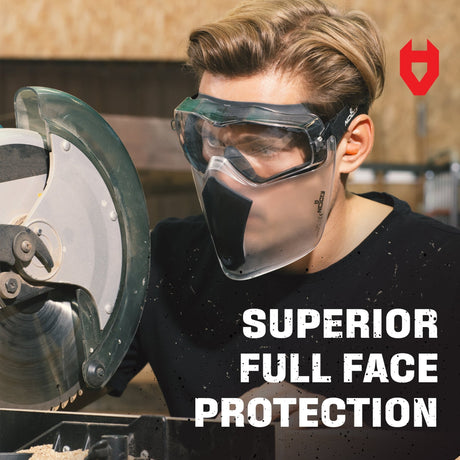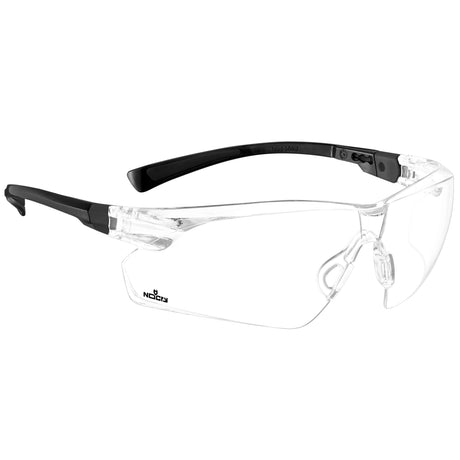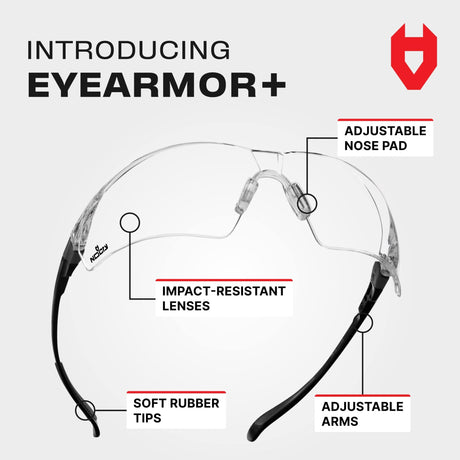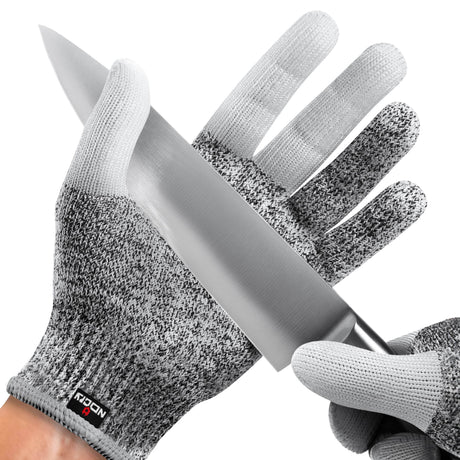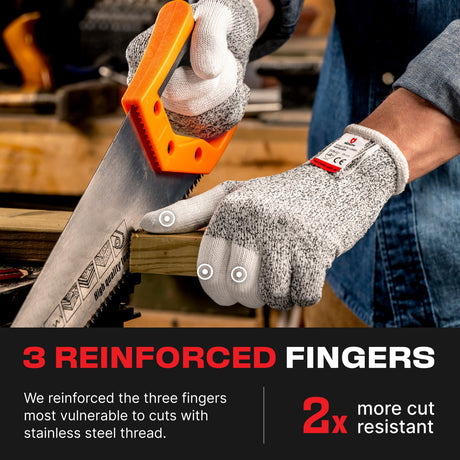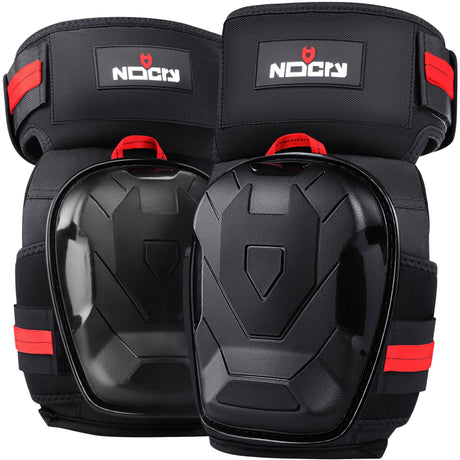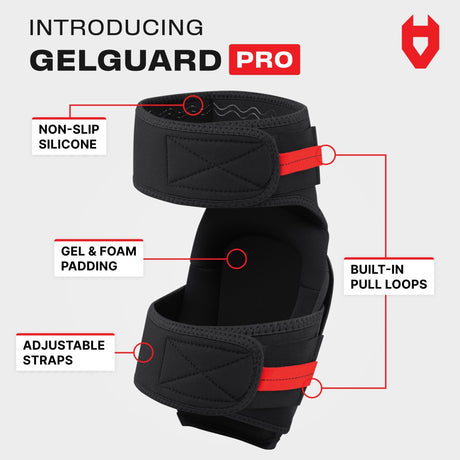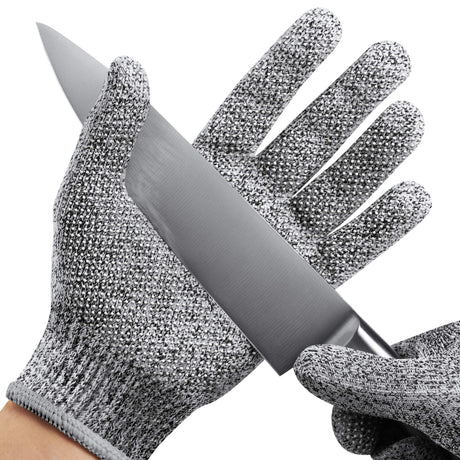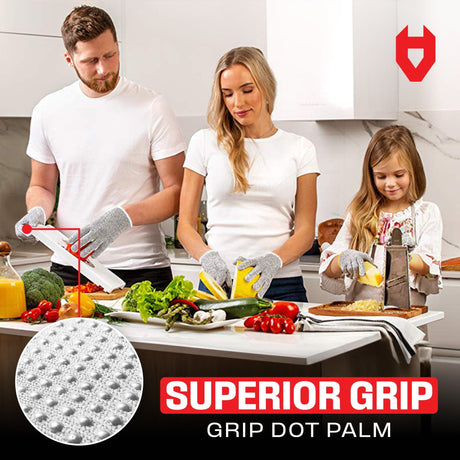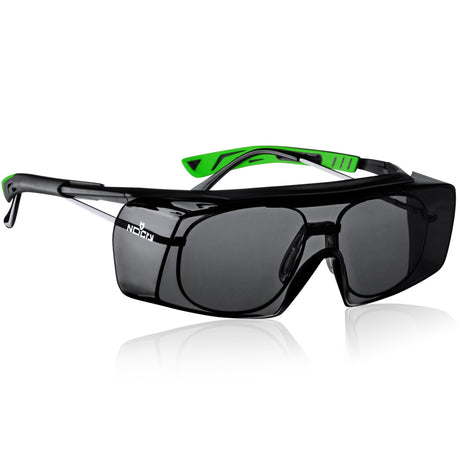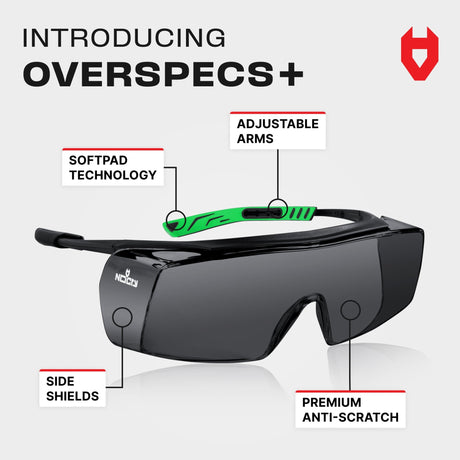◦ Contents
Key Takeaways
- Knee pads are made of layers that include interior padding and exterior caps, each using different materials for comfort, protection, and durability.
- Foam, gel, and rubber are the most common padding materials, offering varying levels of cushioning and flexibility.
- Hard caps are typically made from durable plastics or carbon fiber for more rough enviroments, while soft caps made from foam or rubber suit lighter tasks like flooring or gardening.
- Choosing the right materials helps you avoid discomfort, reduce joint strain, and stay safe during demanding jobs.
If you’ve ever wondered what knee pads are made of, you’re not the only one. When trying to research the best type of knee pad for your job, it might get confusing quick: foam, gel, hard cap, soft cap... Let’s deep dive together to understand what it all means.
What Are Knee Pads Made Of?
Knee pads are made from a mix of materials that each do something different — some cushion your knees, others protect them, and a few just help everything stay in place. The basics usually include padding on the inside and a tougher outer cap on the outside.
The padding is what keeps your knees from getting sore. It absorbs pressure when you’re kneeling and helps with impact, especially on hard surfaces. The cap is that harder shell on the front — it protects your knee from rough or sharp surfaces, like gravel, concrete, or tile edges.
Most knee pads also have a soft inner lining made from something like polyester or neoprene to keep things comfortable and wick away sweat. Then there are the straps, which are usually made from elastic or nylon to keep the pads in place while you move.
Some heavy-duty knee pads go even further, with things like hinges for flexibility, reinforced plastic or metal parts for extra support, and grippy strips inside to help them stay put. Depending on what kind of work you’re doing, the right mix of materials can make a big difference in how well your knee pads work and how long they last.
What Materials Are Used for Knee Pads Inner Lining?
The inner lining is what your skin or clothing actually touches. It’s the layer that helps prevent chafing, traps or releases moisture and contributes to overall breathability. Linings are typically made from soft, flexible fabrics like polyester, nylon, or neoprene — but each behaves differently.
Polyester is the most common choice thanks to its lightweight, quick-drying properties. It’s breathable enough for warm weather and provides a smooth, low-friction surface, which helps prevent skin irritation over time.
Nylon feels similar but is more abrasion-resistant. It’s often used in tougher environments where durability matters more than airflow.
Neoprene, which is technically a synthetic rubber, offers both stretch and cushioning. It hugs the contours of your knee better than fabric linings, making it ideal for form-fitting pads used in trades like flooring or auto work. However, it retains more heat and can get sweaty over time, especially in hot climates.
Anti-skid leather or leather surface linings are sometimes used in pads designed for slick surfaces or environments where traction matters. Leather adds durability, a natural resistance to slipping, and stands up well to friction. It’s especially helpful in tasks where staying planted is crucial.
Some linings also include mesh zones or ventilation holes to help wick sweat, reduce odor, and keep the knee pad fresher between uses. These features are especially useful if you're wearing them day after day in physical work settings.
What Materials Are Used for Knee Pads Padding?
The padding is what makes a knee pad either comfortable or frustrating to wear over time. This is especially important for anyone spending long hours kneeling, whether on a job site or in the garden. The knee pad’s inner padding is commonly made of foam, gel, rubber, or silicone.
Foam padding, especially EVA foam, is one of the most common materials used. It’s soft, lightweight, and breathable, making it great for general-purpose use. But EVA can lose its cushioning over time, especially with frequent pressure. Some designs upgrade to high-density foam, which is firmer and more durable. It holds its shape better under stress and offers longer-lasting support, making it ideal for heavy-duty or industrial tasks.
Gel padding is a newer and increasingly popular alternative. Unlike foam, gel molds to the shape of your knee, distributing weight more evenly and offering better long-term support. Many knee pads combine gel with foam for the best of both worlds: softness and support with longer wear life.
Rubber or silicone may also be used inside some knee pads or as a liner, providing extra grip and flexibility. While not as plush as foam or gel, they’re useful in cases where movement and durability are more important than softness.
What Materials Are Used for Knee Pads Outer Caps?
While the inside padding protects your knee from pressure, the cap is your shield against whatever surface you’re kneeling on. This is especially important when dealing with concrete, gravel, tiles, or any rough, uneven terrain.
Soft caps are usually made from the same materials used in padding, like foam, rubber, or silicone. They’re lightweight, quiet, and great for delicate surfaces you don't want to damage or scratch, like hardwood floors or garden beds. However, they don’t hold up well under rougher conditions and offer limited protection from sharp or jagged debris.
Hard caps, on the other hand, are often made from polyvinyl chloride (PVC), high-density polyethylene (HDPE), TPR (thermoplastic rubber), or even carbon fiber. These knee pad materials are designed to take a beating.
Abrasion-resistant shells are typically soft or semi-flexible, not true hard caps, though they’re often added to both soft and hard cap designs to prevent surface wear. They are made from tough synthetics or reinforced coatings. These are used in high-wear areas, especially around the cap or side panels, to extend the life of the knee pad and reduce surface damage from repeated use.
You’ll commonly find hard caps on knee pads meant for roofing, flooring installation, welding, or masonry work. They slide more easily across surfaces but can be noisy and a bit less comfortable if not paired with high-quality padding.
What Materials Are Used for Knee Pads Straps?
Straps keep the entire knee pad in place, and if they’re made poorly, you’ll feel it every time they dig into your leg or slip out of position. Most straps are made from a combination of elastic, neoprene, or woven nylon, depending on how much stretch and support the design requires.
Elastic is often used in lightweight, flexible knee pads where movement is a priority. It stretches to conform to your leg, but it can lose tension over time or curl at the edges if not reinforced.
Neoprene, by contrast, provides a snug fit with more durability and cushioning, which makes it more comfortable for all-day wear. It’s often used in professional-grade knee pads because it holds its shape while still being soft.
Nylon webbing is a tougher, less stretchy option typically used in heavy-duty designs. It’s more resistant to fraying or tearing and is often paired with buckles or hook-and-loop fasteners. Unlike elastic, nylon won’t flex as much, so the fit relies more on the hardware used to tighten or secure it.
Fastening systems can vary: some use fabric hook-and-loop strips for quick adjustment, while others rely on plastic side-release buckles or slide-through loops.
Some high-end models use strong adjustable slip-in clips or military-grade slip buckles for a secure fit that won’t loosen with movement. Dual hook-and-loop adjustable straps offer fast, tool-free fit adjustment and are common in both consumer and professional-grade pads.
You’ll also find details like silicone grip strips sewn into the inside of neoprene straps to reduce slipping, which is especially useful when working in awkward positions or on smooth floors.
Other features like a quick-adjust storage loop make it easy to hang or carry the pads when not in use, which is handy on job sites. Military-grade rivets are sometimes used to reinforce strap attachment points and prevent tearing at high-stress areas where traditional stitching might fail.
What Other Materials Are Used in Knee Pads?
Beyond the basics, advanced knee pads often use extra materials like hinges, articulated shells, or reinforced plastics (like TPU or polycarbonate) to improve flexibility and durability.
Features like silicone grip strips, magnetic inserts, or Kevlar panels offer added function for trades or industrial use. Even the thread — often bonded nylon or Kevlar — affects long-term durability. These materials might not stand out, but they can be the key to comfort, fit, and long-lasting performance.
Which Knee Pad Materials Are Best for Your Work?
If you’re doing light work like gardening, cleaning, or DIY around the house, comfort should be your priority. Soft foam or gel knee pads with rubber caps are usually more than enough.
But for construction, tiling, or mechanical work, durability and protection matter more. That’s when hard caps and sturdy gel or hybrid padding make the biggest difference.
The right material mix depends on how long you’ll wear them, how much you move, and the type of surface you’re on. Don’t assume all knee pads are the same — some are built to last, while others are designed for short bursts of comfort.
Read our guide about when and how to wear knee pads for more in-depth information about choosing the right pair for you.
What Are NoCry Knee Pads Made Of?
NoCry knee pads use a variety of materials depending on the model, its purpose, and the price point. For example, our GelGuard Pro model combines soft EVA foam with gel cushioning for comfort, while the the KneeGuard Pro features durable thermoplastic rubber (TPR) caps and a dual-layer of gel and foam for strong protection.
At the same time, models like the SupportGuard Pro are made of premium gel padding and EVA foam for comfort, a durable water-resistant PVC cap, polyester lining, and neoprene straps for a secure, breathable fit. Our most affordable option, the EasyGuard Ultra Lightweight knee pads, are designed for comfort and practicality, featuring soft EVA foam padding, elastic neoprene straps, and an abrasion-resistant shell.
Most of our models have breathable polyester or neoprene linings to reduce moisture and irritation, and adjustable nylon or neoprene straps with silicone grip strips to keep the pads securely in place. These material choices vary to suit tasks from light gardening to tough construction work.
Conclusion
Each type of knee pad is made differently, with unique purposes in mind. This is why the materials used can make or break your comfort and safety. Whether you’re doing long-term work on a construction site or weeding your garden on the weekend, the right knee pads materials will keep you pain-free and productive.
Take time to assess your work environment, how often you’ll be kneeling, and whether you need more mobility or protection. With that in mind, you’ll be better equipped to choose a pair that fits your needs — and lasts.
FAQ
What are the most comfortable knee pads made of?
Gel padding, often combined with foam, tends to provide the best comfort for long-term use. It molds to your knee and holds its shape better than foam alone.
Are hard cap knee pads better than soft ones?
That depends on the job. Hard caps offer more protection and are ideal for rough surfaces, while soft caps are quieter and better for indoor or delicate work.
How long do foam knee pads last?
Foam pads may wear down after a few months of regular use, especially in demanding environments. Look for dual-layer padding or replaceable inserts if durability is a concern.
What material makes knee pads last longer?
Materials like high-density foam, thermoplastic rubber (TPR), and reinforced nylon help knee pads last longer by providing durability and resistance to wear.
When should I change my knee pads?
You should replace knee pads when the padding becomes compressed, the straps lose their grip, or the protective cap cracks or wears down significantly.
What is the OSHA recommendation for knee pads?
OSHA doesn’t reference a specific ANSI standard for knee pads. Instead, the administration requires employers to provide effective knee protection based on the job hazard without specifying exact materials or standards. The focus is on durability, impact protection, and comfort suitable for the work environment.







